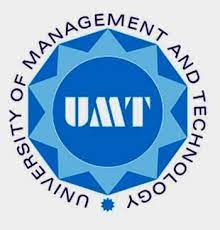The Importance of Technology Management in Today’s Digital Age
Technology has become an integral part of our daily lives, transforming the way we work, communicate, and live. In this fast-paced digital age, effective technology management is crucial for businesses and organisations to stay competitive and adapt to constant technological advancements.
Understanding Technology Management
Technology management involves the planning, implementation, and maintenance of technology systems and infrastructure within an organisation. It encompasses a range of activities, including assessing technology needs, selecting appropriate solutions, managing resources efficiently, and ensuring the security and reliability of technological assets.
The Benefits of Effective Technology Management
Implementing robust technology management practices can bring numerous benefits to an organisation:
- Increased Efficiency: Properly managed technology systems can streamline processes, automate tasks, and improve overall operational efficiency.
- Enhanced Productivity: By leveraging technology effectively, employees can work more productively and collaboratively, leading to better outcomes for the organisation.
- Better Decision-Making: Access to accurate data and real-time insights through technology can help managers make informed decisions quickly.
- Competitive Advantage: Organisations that embrace innovative technologies and manage them well often gain a competitive edge in their industry.
- Risk Mitigation: Effective technology management includes robust cybersecurity measures that protect against data breaches and other cyber threats.
The Role of Technology Managers
Technology managers play a vital role in overseeing the implementation and maintenance of technology within an organisation. They are responsible for aligning technology strategies with business goals, managing IT budgets effectively, evaluating new technologies for adoption, and ensuring that systems operate smoothly to support organisational objectives.
Challenges in Technology Management
While effective technology management offers many benefits, it also comes with challenges. Rapid technological changes require organisations to adapt quickly, which can strain resources and require ongoing training for staff. Additionally, cybersecurity threats continue to evolve, necessitating proactive measures to safeguard sensitive data and systems.
In Conclusion
In today’s digital age, technology management is essential for organisations looking to thrive in a highly competitive landscape. By investing in robust technology management practices, businesses can harness the power of innovation to drive growth, improve efficiency, enhance decision-making processes, and stay ahead of the curve in a rapidly evolving technological landscape.
8 Essential Tips for Effective Technology Management in Modern Businesses
- Ensure clear communication between IT and non-IT teams to align technology with business goals.
- Regularly assess and update the technology infrastructure to ensure efficiency and security.
- Implement proper training programs to enhance employees’ tech skills and adapt to new technologies.
- Establish data backup and recovery procedures to prevent data loss in case of system failures.
- Stay informed about emerging technologies and trends relevant to your industry for strategic planning.
- Develop a comprehensive IT budget that considers both short-term needs and long-term investments.
- Monitor key performance indicators (KPIs) related to technology usage to track progress and identify areas for improvement.
- Ensure compliance with relevant regulations, such as data protection laws, when implementing new technologies or handling sensitive information.
Ensure clear communication between IT and non-IT teams to align technology with business goals.
Ensuring clear communication between IT and non-IT teams is a critical tip in effective technology management. By fostering open and transparent dialogue between these two groups, organisations can align technological initiatives with overarching business goals. Clear communication helps bridge the gap between technical expertise and business objectives, ensuring that technology investments and implementations are strategically aligned to drive value for the organisation. When IT and non-IT teams collaborate effectively, they can work towards a common vision, enhance operational efficiency, and achieve greater success in leveraging technology to support the overall growth and success of the business.
Regularly assess and update the technology infrastructure to ensure efficiency and security.
Regularly assessing and updating the technology infrastructure is a critical tip in technology management to maintain efficiency and security within an organisation. By conducting regular assessments, businesses can identify outdated systems, potential vulnerabilities, and areas for improvement. Updating the technology infrastructure not only enhances operational efficiency but also strengthens cybersecurity measures, safeguarding sensitive data and mitigating risks of cyber threats. Embracing this proactive approach to technology management ensures that the organisation remains agile, resilient, and well-equipped to meet the evolving demands of the digital landscape.
Implement proper training programs to enhance employees’ tech skills and adapt to new technologies.
To excel in technology management, it is crucial for organisations to implement effective training programs aimed at enhancing employees’ technical skills and facilitating their adaptation to new technologies. By investing in continuous learning and development initiatives, employees can stay abreast of the latest technological trends, improve their proficiency in using tech tools, and contribute more effectively to the organisation’s overall technological advancement. Such training programs not only empower employees but also foster a culture of innovation and agility within the workplace, enabling the organisation to navigate the ever-changing tech landscape with confidence and competence.
Establish data backup and recovery procedures to prevent data loss in case of system failures.
Establishing data backup and recovery procedures is a crucial tip in technology management to safeguard against data loss in the event of system failures. By regularly backing up important data and implementing effective recovery processes, organisations can mitigate the risks associated with unexpected downtime or cyber incidents. This proactive approach not only ensures the continuity of operations but also instils confidence in stakeholders that valuable information is protected and can be swiftly restored when needed. Prioritising data backup and recovery procedures is an essential component of a comprehensive technology management strategy that prioritises data security and resilience.
Stay informed about emerging technologies and trends relevant to your industry for strategic planning.
Staying informed about emerging technologies and trends relevant to your industry is a crucial aspect of effective technology management. By keeping abreast of the latest developments, you can identify opportunities for innovation, anticipate market shifts, and strategically plan for the future. Understanding how new technologies can impact your industry allows you to make informed decisions that drive growth and maintain a competitive edge in today’s rapidly evolving digital landscape.
Develop a comprehensive IT budget that considers both short-term needs and long-term investments.
Developing a comprehensive IT budget that takes into account both short-term requirements and long-term investments is crucial for effective technology management. By carefully planning and allocating resources, organisations can ensure that they meet immediate IT needs while also strategically investing in technologies that will drive future growth and innovation. Balancing short-term operational expenses with long-term strategic investments allows businesses to stay agile, competitive, and prepared for the evolving technological landscape.
Monitor key performance indicators (KPIs) related to technology usage to track progress and identify areas for improvement.
Monitoring key performance indicators (KPIs) related to technology usage is a crucial tip in effective technology management. By tracking KPIs, such as system uptime, response times, user adoption rates, and data security metrics, organisations can gain valuable insights into their technological performance. This allows them to identify areas for improvement, measure progress towards their goals, and make informed decisions to optimise their technology infrastructure. Regularly monitoring KPIs helps ensure that technology resources are being utilised efficiently and effectively, ultimately leading to better overall performance and operational success.
Ensure compliance with relevant regulations, such as data protection laws, when implementing new technologies or handling sensitive information.
It is crucial to ensure compliance with relevant regulations, such as data protection laws, when implementing new technologies or handling sensitive information. By adhering to these regulations, organisations can safeguard the privacy and security of their data, build trust with customers and stakeholders, and mitigate the risk of costly legal consequences. Prioritising compliance not only demonstrates a commitment to ethical business practices but also helps maintain a positive reputation in an increasingly data-driven world.


